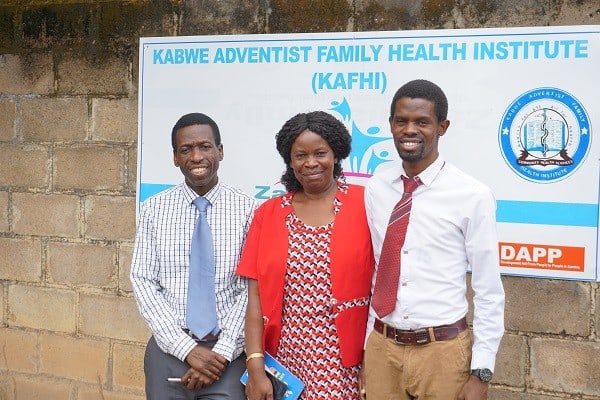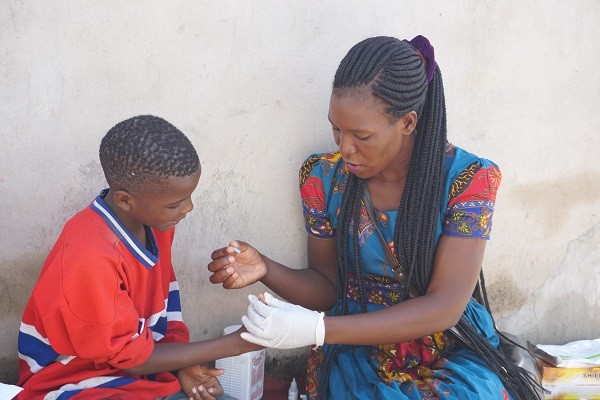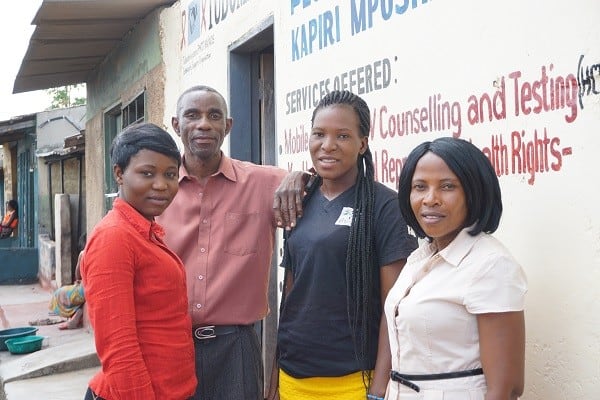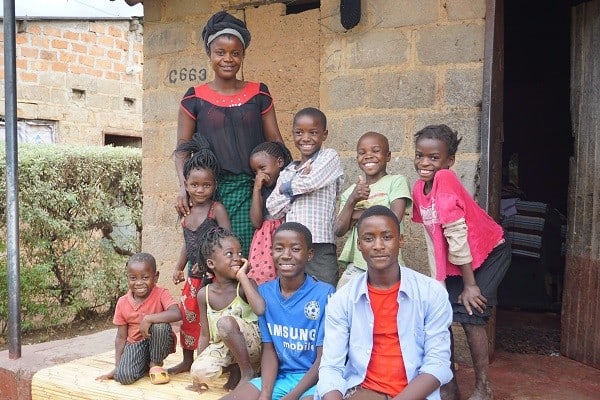Kabwe, ZambiaEunice Mwansa has a very challenging job. As Program Manager for the Kabwe Adventist Family Health Institute (KAFHI), she must ensure the organization has the systems and resources it needs to improve the lives of 6,000 orphans and vulnerable children affected by the HIV/AIDs pandemic.
The organization provides free HIV testing for children and their families, health services for those who test positive for the virus, and counseling. It covers school fees for children whose families cannot afford them and provides goats, chickens and legumes to improve their nutrition and livelihoods. And behind all of this, is a small team with increasingly powerful systems.
Just a few years ago, however, KAFHI was struggling to monitor and evaluate its programs, mobilize resources and plan for the future.
“We had no M&E officer, lots of gaps, challenges with resource mobilization, project proposal writing and report writing, and governance. We had an inactive board,” says Mwansa.

As a partner to implementer Development Aid from People to People Zambia and Creative Associates International on the Zambia Family South Central project (ZAMFAM), KAFHI was given the opportunity to work with Creative to build its capacity and improve its performance over the course of three years.
Through a tailored capacity-building plan that included workshops, one-on-one mentoring, e-learning and ongoing support, Creative worked with the organization to hire an M&E officer and begin using a system to track progress. It helped KAFHI to write a five-year strategic plan, a resource mobilization plan and a community engagement plan, and reactivate its board.
“Where we were when Creative came in, we had a lot of gaps. These are thing we are able to do now,” says Mwansa.
20+ organizations, one goal
KAFHI is not alone in its mission to support the most vulnerable children and families and to reduce the devastating effects of HIV/AIDs in Zambia’s South and Central provinces, hard hit by the disease due to itinerant labor patterns and the transit routes that pass through these regions.
There were 1.1 million people living with HIV in Zambia in 2017, 72,000 of whom were age 14 or younger, according to UNAIDS. Only 75 percent of those affected were accessing antiretroviral therapy.

ZAMFAM works with more than 20 community-based organizations to improve their ability to provide wraparound services to orphans and vulnerable children and families—with a focus on case management, child protection, activities to boost household economic resilience, health support, life skills and more.
It aims to empower households caring for 144,000 orphans and vulnerable children with the knowledge and capacity to demand and access health and social services. To date, it has reached 130,00 orphans and vulnerable children, including 12,000 who are HIV positive.
The five-year project is funded by the U.S. Agency for International Development and implemented by Development Aid from People to People Zambia, in partnership with KAFHI and the Network of Zambian People Living with HIV and AIDS. For its part, Creative carried out capacity-building with the 23 community-based organizations during the project’s first three years.
Evidence of improvement
Working in the Kapiri-Mposhi district of Zambia’s Central province, Tubombelepamo is one of those organizations that has seen big gains in its ability to serve beneficiaries. With just four staff and a mandate to test, counsel, treat and support as many HIV positive children as possible in the district with 250,000 residents, Tubombelepamo might have been over-matched.
In May 2016, a Creative Organizational Capacity Assessment—a composite of scores on governance, project management and advocacy, partnership-building, operations and gender equality, among other areas—revealed that Tubombelepamo was performing at just 63 percent capacity. On the most recent assessment in December 2017, the group scored a 76 percent, a 13 percent improvement.
Overall, the assessment showed growth among the community-based organizations that worked with Creative. Ten organizations that partner with ZAMFAM on implementation and received training from Creative increased their capacity by an average of 6 points, with a notable 38 points gained on average in monitoring and evaluation. The other community-based organizations that received training increased their capacity by an average of 5.2 percent, with 9 percent gained on average in networking and advocacy.
Michael Stephen Mumbi, Tubombelepamo’s Finance and Administration Manager, says that the budgeting systems and workplans that he was able to put in place with support from Creative have made his work significantly more efficient.
“Budget tracking and tracing, that’s where most organizations go wrong,” he says. “It makes life easier. You can tell people where their line item is.”

Mumbi, who is HIV positive, says these improvements lead to better use of resources and, in turn, better programming.
“When things from me are correctly done, the community stands to benefit,” he says.
Reflecting on the gains the organization has achieved, he is committed to maintaining the high quality.
“We do not want our standards to go down, not even a quarter, not even an inch,” he says.
Better systems, better services
Indeed, the years of training, improving, and growing is paying off in dividends of smoother programming, better management and healthier children and families.
Margaret Malama is one of KAFHI’s many Childcare Volunteers. Though she has five children of her own from ages 4 to 16, she has taken up the responsibility to ensure that other children in her neighborhood Matilyo in the Kapiri-Mposhi district are taken care of and have access to education, nutrition and, importantly, health care.
Malama, who serves as secretary of her volunteer group, regularly visits vulnerable families at their homes. She ensures the children are attending school, thanks to the school fees covered by the organization.
Through its work with Creative, KAFHI learned how to develop a community engagement plan to engage volunteers like Malama and other community members to improve their program and better serve those in need.
And the program has helped the community and raised awareness about how to access services, says Malama.

“The neighbors know about this work and come and ask me,” she says. “It has also benefited my family because I have learned more; how to care for our children, prevent HIV, hygiene, education. I have gained knowledge.”
KAFHI Executive Director Obby Mubangwa says that this was part of the appeal in working with the ZAMFAM project, providing knowledge and skills that stand the test of time for families and communities.
“We wanted those donors who would factor in the aspect of empowering the family tomorrow. When we are not around, the family should be able to do something for the children in our absence,” he says.
Preparing for the long-term
As Creative wraps up its three years of capacity building support with the ZAMFAM project, the 23 organizations it helped to strengthen are making sure their new own knowledge, skills and systems are ready for the long-term.
Development Aid from People to People will continue to provide one-on-one support for two more years, but ultimately, these organizations know they must stand and grow on their own.
Mumbi says that Tubombelepamo has a “very powerful strategic plan, resource mobilization plan and M&E plan in place.”
And he knows that these are going to be critical if the organization is going to work toward his own dream— “to see the epidemic conquered.”
At KAFHI, Executive Director Obby Mubangwa, says that the skills they’ve gained and the systems they’ve introduced are not going away. In the future, though staff might leave, and new staff might join, the tools and documents are in place so the knowledge stays with KAFHI.
Looking toward the future, he says: “We are focused. We are moving. Four years from now, come to Zambia and see how we are doing.”